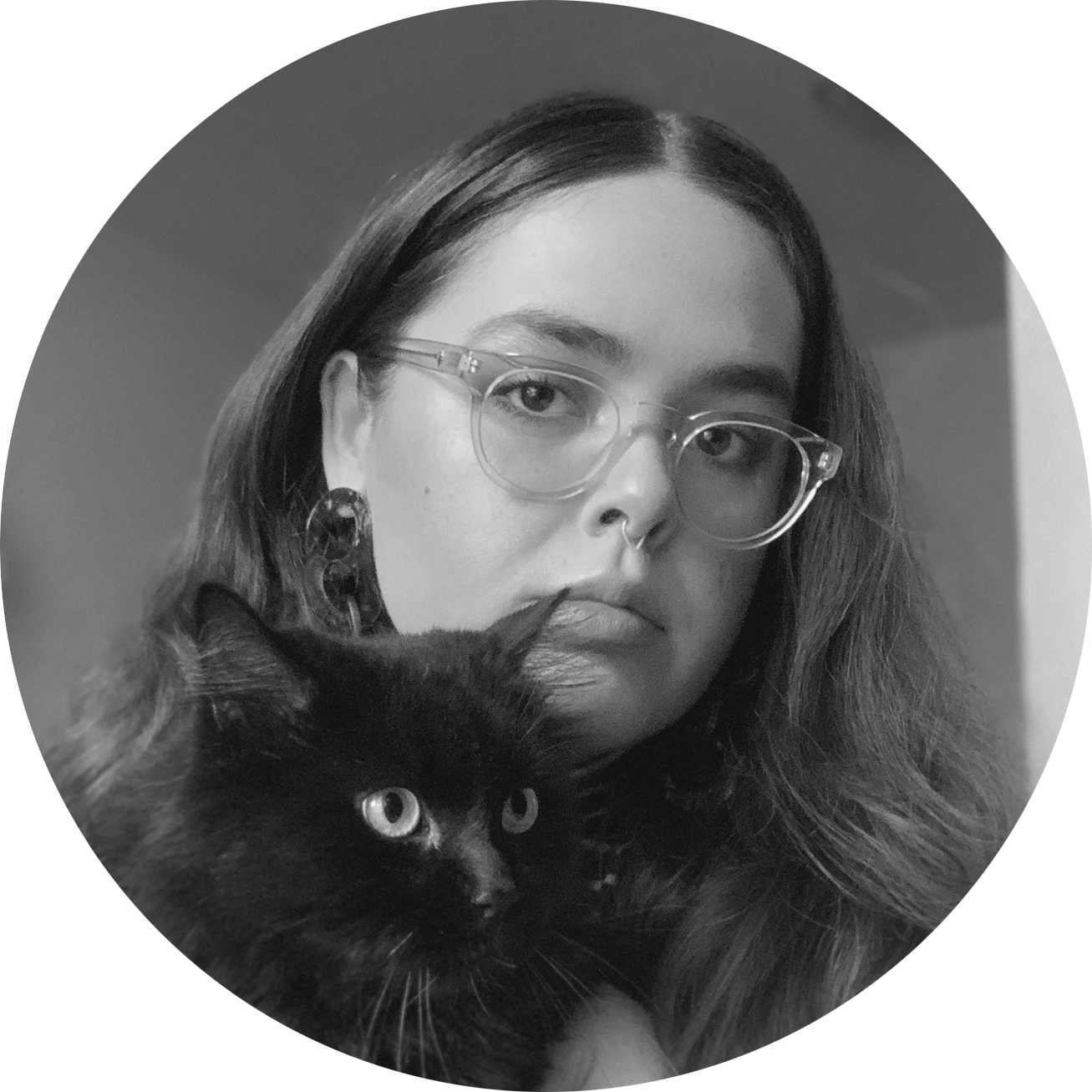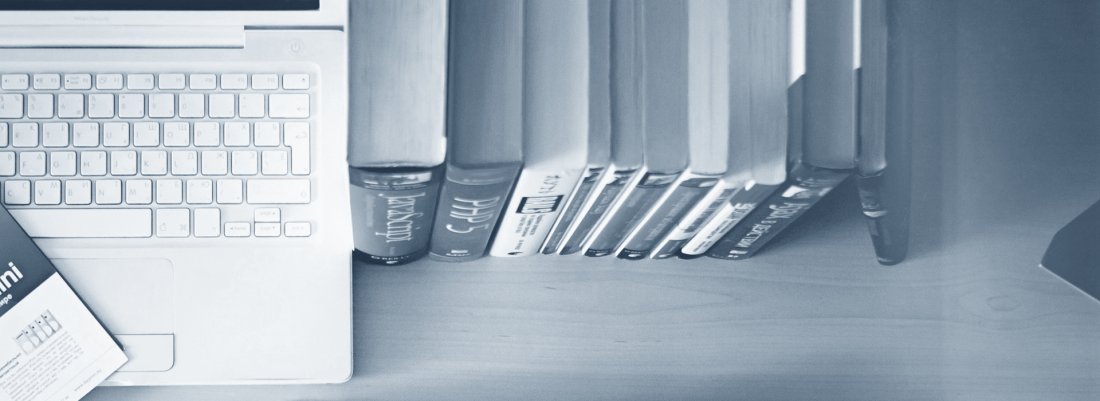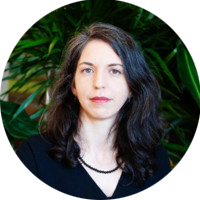A conversation around kinship, futurities and accessibility as a love language
Artistic practice is all about suppleness and listening to others. These qualities make arts professionals key links in the chain of transformations that are overdue in our field, as inclusivity and the decolonization of our practices are issues that cannot be evaded today.
The Machinery team sat down with rudi aker, artist and cultural worker, in order to discuss about the impact we have on other people and on the territory that surrounds us.
Machinerie : Can you tell us about your background, what drove you to become an artist and cultural worker?
rudi : Coming from a small town and having an interest in arts, I never really had access to the things that I was most interested in – this was a big part of what drove me to become an artist and cultural worker. Growing up, there was a small artist-run center in my hometown that put on different exhibitions and events and that became such a big part of my youth – it was how I met a lot of my friends and came to understand what artist-run culture was. It offered an alternative to the larger publicly funded institutions by giving access to more innovative and contemporary practices.
This is ultimately what influenced my decision to go to art school. I came to Montreal because I was looking for a mix of art history and art practice that I couldn’t access at home. Making the move from Fredericton to Montreal was and still is huge for me. This move has made me question and re-question how can I contribute to this local milieu, but also, how I can begin to facilitate more opportunities for myself and the communities that I am a part of.
My drive throughout my career and my professional practice is influenced by the intention that I’ll eventually make my way back home. There’s so much foundational work that needs to be built upon so that people can have wider access to resources and knowledge – how to write a grant, how to make a website… These kinds of things that we often take for granted as folks who are more embedded in arts culture.
There are really so many amazing artists who are working in all corners of the world who need that kind of support. I’ve come to assume a position of support concerning how I can best contribute and offer the skills that I’ve gained, within my work and within institutions.
Machinerie : Could you describe your practice, both as an artist and a cultural worker? What are the elements that overlap in the different areas of your practice?
rudi : I don’t think I could necessarily have an artistic practice without having a more widespread community and cultural practice because I aim to place the community at the center of all the work that I do. I carry a strong sense of responsibility towards the community and the people that raised me, to honour them, and to also eventually bring my knowledge home.
I aim for what I know and what I’ve learned to serve my communities in a broader scope. I am focused on that sense of kinship, in a way that, because of its non-inherent nature, it needs to be nurtured. I often ask myself, “how do I find myself in the midst of community, as somebody who lives outside of their home territory?” I’ve been very fortunate to build a series of somewhat satellite communities here in Montreal, around art and the cultural sector, especially, and I can’t imagine myself fitting into any of those spheres without the people that I’ve formed such deep connections with.
As an artist, as someone with a practice of making things, through both my materials and processes – I’m referencing a direct tie between my work and my matriarchs. I hold a responsibility towards these women in my life who have passed these skills along to me. This responsibility extends even further to how their knowledge and influence ripples out in my work as a writer, a curator, a community facilitator. For me, these ties of intersectionality ultimately feed a greater sense of community.
Machinerie : As an artist, one of your focuses is exploring territories in a non-linear way, offering alternative ways to occupying space and centering practices. How does this artistic approach shape how you speak about your practice and the practice of others?
rudi : My interest in space ultimately circles around accessibility – to nature, to homeland, etc. Asking those questions of what does it mean to be displaced from your homeland? What does it mean to be a guest?
All of those considerations feed our understanding of how we occupy space. These ideas are at the root of my deep interest in mapping and in future practices where we are able to disconnect ourselves from the ownership of place. For example, I live in Montreal, but in the greater sense, I am living on Montreal, I’m living on Tioh’tia:ke, on land that is not that of my ancestors, land that has been stewarded by a community that I do not belong to.
My work cycles through what it means to be home and how we build a home. How do we build a home on land that is not ours to claim? I think it is an interesting question to think through as an Indigenous person, where I suppose that while I am Indigenous to so-called “Canada”, more realistically, and more tangibly, I am Indigenous to a very specific place, and I believe that this nuance is necessary in larger conversations around indigeneity and nationalism.
I understand this preoccupation of being an uninvited guest, of settling on a territory that is not my own. This constant rumination is linked back to my practice, the way I talk about my work, and the work of others, too.. That, ultimately, also comes back to accessibility. I don’t ever want to insinuate that there’s some sort of hierarchy between what I know and what somebody else knows – I don’t believe that I hold any sort of power or say over how somebody is experiencing something. Whether that be in terms of how we’re perceiving our relationships to place, to community, or to identity. While I grapple with all of those things in my day-to-day life and eventually through my practice – it is an individual awareness that is fed by a more widespread and collective understanding.
We are, obviously, still, more or less trained to think and talk about art in a certain way, especially those of us who have gone through post-secondary arts education. I believe that working within this system demands a lot of undoing. How do we cross those intergenerational and intercommunal boundaries that keep others like us from understanding the work we’re invested in? How can we talk about art in an accessible and inviting way so it can be enjoyed and understood more widely? Moreso than by those who are within our immediate vicinity. How can we imagine the arts as a more expansive community practice, one that works to ensure a collective and reciprocal point of convergence?
I want us to be able to take care of each other better so that we can share more of ourselves, our practices and our work as a practice of community making that takes into account both our physical and spiritual needs.
Machinerie : Contemporary art and artistic practices are often engaged with political matters, offering space for critical thinking and difficult conversations. How, as an artist and cultural worker, do you navigate this, especially when communicating with different communities?
rudi : I actually had this conversation with somebody a few days ago, somebody asked me if the work that I make is political. Well, I don’t know if I have the choice. I don’t think I get to choose whether it is or it isn’t simply because of who I am and the identity that is attached to the work that I make. I will always, as an Indigenous person, be politicized. In whatever context I’m working, in whatever I’m making, which is not something that I hold with any sort of disdain because it just is.
I think one of the bigger struggles in achieving any sort of intersectionality is that we’re not always entering at the same point, but our hope is that we converge at the same point. I think a step forward is understanding and acknowledging where people are coming from. Knowing that we all have a different set of circumstances in which we go through to come together. Something my grandmother and my mom have always told me is that we should always be kind to as many people as we can, because we don’t know what they have to do to get out of their door in the morning. At a very basic level, we need to have a certain amount of empathy for one another.
Obviously, there are extreme sides of that spectrum but I try to take an optimistic or idealist approach, believing that there is good in most people. How do we foster that? How do we foster goodness and kindness especially within contexts and conversations are difficult and unpleasant. I try to mediate these things through a sense of empathy and through a sense that, if anything, most people have a willingness to learn.
We can be idealistic about the world and the future and also recognize that racism (amongst other violences) is extremely pervasive. How do we begin to mitigate this harm within and amongst communities so as to begin to have those conversations about anti-racism, for example, at a more in-depth level, where we can come together with mutual understanding. Even if we don’t fully understand the contexts in which we all come from, we can understand the points where we converge.
I think about that a lot in my mapping practice, because maps are so colonial and they are this assertion of ownership and space. When we start to rethink what a map looks like, what space looks like, what territory looks like, it brings up a lot of uncomfortable feelings for people who are settling in lands that are not their homelands, Indigenous and non-Indigenous. Where I begin my efforts in mitigating that, is by suggesting that there are ways to experience space and experience really beautiful memories of space that are attached to a sense of home while also acknowledging how your family and yourself have come to be in that place.
I think about that every day that I’m living in a place like Montreal, so far away from where my people are from and where my family lives. I think about that every day while I navigate the city, as I call my apartment, my home. Acknowledging where you come from doesn’t have to be accusatory, it can be more exploratory: a practice of honouring, rather than a practice of “calling out”. How do I, or we, take on this sense of occupation responsibly, actively and through an embedded sense of respect?
Machinerie : You often speak about nurturing kinship, especially regarding artistic practices. How does this approach influence your view on communications and art discourses?
rudi : I am a first-generation scholar, I am the first person in my family to go to university and the first person to formulate this understanding of my own identity specifically through the lens of academia – which is so strange. I remember the first time I read something that shook me, profoundly, and I went to tell my grandparents about it. I said, “this colonization thing is a pretty big mess, right?” and I was talking to them, saying, you know, that I had just learned this thing that was probably important and I needed to tell them… as if they didn’t already know. It was at that moment that I realized that I needed to take a step back, to understand that, because I’ve learned something in a different way, it doesn’t necessarily mean that the people around me don’t also have that same information. I think that was the pinnacle for me. If I can’t explain the knowledge that I hold to and with them, then what and who is it for?
If I’m placing myself on this pedestal because I have a certain way of speaking about something and am activating a certain type of language that is not accessible to the people that I care about most, then it’s virtually useless. I really try to carry that intention through my practice, as an artist and cultural worker. If you can’t devise different ways to talk through the things that you hold most dear to the people that you care about most (and to the people that you aim to serve) then what is it that you’re working towards? We need to learn the ability to be flexible in how we’re understanding things. I think that’s the difference between holding knowledge and the sense of embedded knowledge. We don’t just know things, but we’re experiencing them and feeling them and understanding them in ways so that they can be malleable when we’re sharing with others.
I think that is where it all comes back around for me, thinking about contemporary art as this big impenetrable mass of people saying big words and talking in ways that nobody really understands. This insinuates that there is a secret that everybody knows but we don’t talk about, if you know you know and if you don’t, you’re out – which has never been in my own interest. Knowledge gained should be shared, coming back to intercommunal and intergenerational responsibility. I very much understand the place that I hold within my family structure and within my community, to be somebody who has left the nest of my family unit to access what I wanted and needed. I hold that as a responsibility to also take it back and share it, ensuring that accessibility is a type of love language. A kinship strategy of making sure that what we are doing is not only in service of ourselves but in the service of our communities.
Machinerie : To conclude our discussion, could you tell us about your dream and vision regarding future conversations around art? How do you wish art would be portrayed and talked about in the public sphere?
rudi : I’m so fortunate to be able to witness, in and outside of my own communities, this sense of “resurgence” or “emergence” within how we are discussing intersectionality, arts, culture, and most of all, the future.
I hope and dream of these intersectional and accessible futures that are based on care, on nurturing relationships with people that prioritize the wellbeing of others. Care being such a central principle here because the current structure of the art world constantly demands labour. Between me and almost everyone I know, we are constantly burnt out, we are always so tired and this is because, at the end of the day, we don’t always have the capacity to nurture and care for one another because we are so busy participating in this culture that demands so much of our time and our labour and doesn’t return the care.
I was in a workshop recently that was organized by Suzanne Kite and Alisha Wormsley about Black and Indigenous future dreaming, and it was so beautiful. Tricia Hersey from the Nap Ministry facilitated a workshop within the workshop. Her whole practice with the Nap Ministry is rooted in rest as resistance. It was truly transformative to have Tricia verbalizing these things that we so often believe in but struggle to put into practice. There are ways to have these futures that we want, that we dream about but those futures can’t and won’t happen if we’re not taking care of ourselves and our communities.
I want us to be able to take care of each other better so that we can share more of ourselves, our practices and our work as a practice of community making that takes into account both our physical and spiritual needs.

rudi aker is a wolastoqew auntie, artist, organizer, and curator from St. Mary’s First Nation in Sitansisk (Fredericton, New Brunswick) and, for now, a guest on Tiohtià:ke / Mooniyaang (Montreal, QC). Their artistic and research practices center kinship, placehood, visibility, as well as the traversal of (un)colonized spaces through conceptions of counter-cartographies and barrier-breaking.
rudi’s curatorial projects include the finissage for the Aboriginal Curatorial Collective’s Tiohtià:ke Project at the Museum of Contemporary Art (Montreal, QC) in September of 2019. Most recently, rudi was on the curatorial team for the 2020 edition of the Bienniale d’art autochtone contemporain (BACA) presented at various locations in Tiohtià:ke / Mooniyaang, with a large series of online public programs. Their ongoing research-creation project, topographies of a homeplace, has been presented as a workshop for Queering the Map: On_Site at 4th Space (Concordia University) in July 2019 and as a lecture for the TextilesTradeTime Symposium (Concordia University) in October 2019. The first iteration of this project, topographies of a homeplace: wolastokuk, is currently being exhibited among various galleries in the Atlantic provinces through 2020 and 2021: recently in Space Place Home at the Louise-et-Reuben-Cohen Art Gallery (Moncton, NB). rudi is currently finishing a BFA at Concordia University in Studio Arts.





